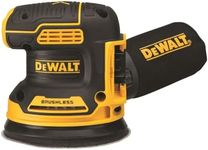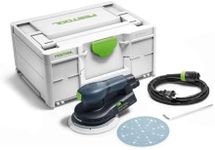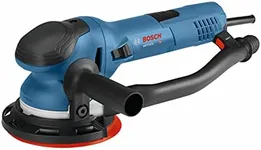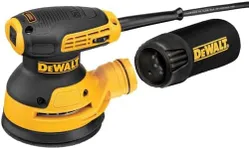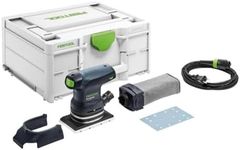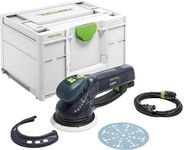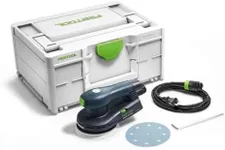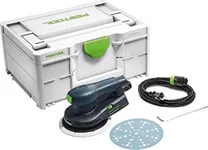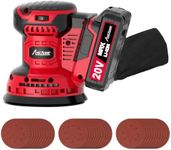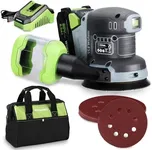Buying Guide for the Best Orbital Sanders
Choosing the right orbital sander can make a significant difference in the quality and efficiency of your sanding projects. Orbital sanders are versatile tools used for smoothing and finishing surfaces, and they come in various types and sizes. To find the best fit for your needs, it's important to understand the key specifications and how they impact performance. Here are the main specs to consider when selecting an orbital sander.Power SourceOrbital sanders can be powered by electricity (corded) or batteries (cordless). Corded sanders provide consistent power and are ideal for long, uninterrupted tasks. They are generally more powerful and suitable for heavy-duty work. Cordless sanders offer greater mobility and convenience, making them perfect for smaller projects or when working in areas without easy access to power outlets. Choose a corded sander if you need continuous power for large projects, and a cordless one if you prioritize portability and ease of use.
Motor PowerMotor power, measured in amps for corded sanders and volts for cordless ones, determines the sander's ability to handle tough materials and prolonged use. Higher motor power means more efficient sanding and the ability to tackle harder surfaces. For light to medium tasks, a motor power of 2-3 amps (corded) or 18-20 volts (cordless) is sufficient. For more demanding jobs, look for sanders with 4-5 amps or higher. Assess the typical materials and project sizes you'll be working on to decide the appropriate motor power.
Orbital SpeedOrbital speed, measured in orbits per minute (OPM), affects how quickly and smoothly the sander can remove material. Higher speeds result in faster material removal and a finer finish. Most orbital sanders offer variable speed settings, allowing you to adjust the speed based on the task. For general use, a speed range of 7,000-12,000 OPM is common. If you work on a variety of projects, a sander with adjustable speed settings will provide the flexibility to match the speed to the specific job.
Pad SizeThe pad size of an orbital sander determines the area it can cover in one pass. Common pad sizes are 5 inches and 6 inches. A 5-inch pad is more maneuverable and suitable for detailed work or smaller surfaces, while a 6-inch pad covers more area and is better for larger projects. Consider the typical size of your projects and the level of detail required when choosing the pad size. For general-purpose use, a 5-inch pad is often sufficient, but for larger surfaces, a 6-inch pad can save time and effort.
Dust CollectionDust collection is an important feature that helps keep your workspace clean and reduces airborne particles. Orbital sanders come with built-in dust collection systems, which can include dust bags, canisters, or ports for connecting to a vacuum. Effective dust collection improves visibility and reduces cleanup time. If you work indoors or on projects that generate a lot of dust, look for a sander with a high-efficiency dust collection system. Consider how easy it is to empty and maintain the dust collection system as well.
ErgonomicsErgonomics refers to the design and comfort of the sander, which can impact how easy and comfortable it is to use for extended periods. Features like a comfortable grip, lightweight design, and low vibration levels contribute to better ergonomics. If you plan to use the sander for long periods, prioritize models with ergonomic features to reduce fatigue and improve control. Test the sander's feel in your hand and consider user reviews to gauge its comfort and ease of use.
DurabilityDurability is a measure of how well the sander can withstand regular use and tough conditions. High-quality materials and construction contribute to a longer lifespan and better performance. Look for sanders with robust build quality, reliable brand reputation, and positive user reviews regarding durability. If you use the sander frequently or for heavy-duty tasks, investing in a durable model will ensure it lasts longer and provides consistent performance.

